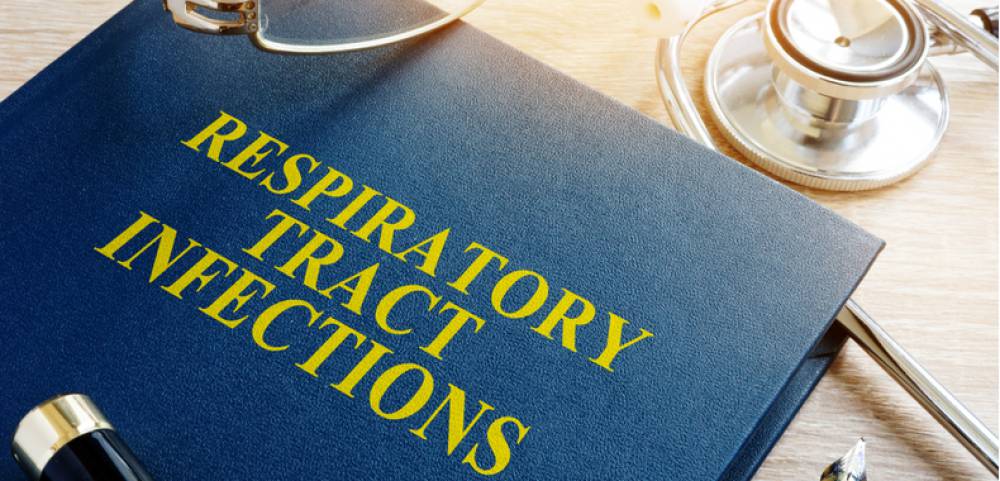Subscribe to get weekly insights
Always stay up to date with our newest articles sent direct to your inbox
Published on 6 Feb, 2020
Updated on 11 Apr, 2025
11567 Views
4 min Read

Written by Care Health Insurance
favorite2Likes
Any kind of infection only brings misery and helplessness. Infections related to respiration are terrible infections as they restrict your respiratory system, resulting in discomfort and pain. Respiratory tract infection is the most widespread infection these days. The respiratory tract consists of all the organs involved in breathing, affecting the lungs, airways, sinuses, and throat.
Viruses, bacteria, mycoplasma, and fungi attack the respiratory system and cause respiratory problems. It is a communicable infection as bacteria or viruses can easily enter the tract when people inhale or come into contact with infected patients. People are more prone to get infected with RTI during winter. If treated well and in time, respiratory infections can be cured completely. But, delays in treatment can cause serious infections and life-threatening situations.
In this article, you can learn about the symptoms, treatment and causes of respiratory tract infections– lower respiratory tract infection and upper respiratory tract infection.
Lower Respiratory Tract Infections primarily affect the lower parts of the respiratory system, including the lungs, trachea and bronchi. One may suffer pneumonia (both bacterial and viral), bronchiolitis and bronchitis due to lower respiratory tract infection.
Various microorganisms cause lower respiratory tract infections. The common causes include-
Bacterial infection is one of the most common causes of LRTIs. These infections result in Chlamydia pneumoniae, streptococcus pneumoniae (pneumococcus), Mycoplasma pneumoniae, Legionella pneumophila and Haemophilus influenzae.
Viral infection is another common cause of LRTIs after bacterial infection. Influenza viruses, respiratory syncytial virus (RSV), rhinoviruses (cause of the common cold), and coronaviruses (e.g., causing COVID-19) can lead to viral pneumonia and bronchitis.
Not as common as viral and bacterial infections, fungal infections like pneumocystis jirovecii can harm the lower respiratory tract, especially in people with weak immune systems.
A few LRTIs can be caused by unusual pathogens, such as mycobacterium tuberculosis (causing tuberculosis) and many parasites. .
Once exposed to pollutants, toxic gases or irritants, you become more prone to LRTIs.
However, it's important to know that the particular cause of an LRTI may vary, and the severity and treatment of the infection may differ depending on the microorganism. Proper diagnosis and appropriate medical care are essential for managing these infections.
>> Also Read: 5 Best Ways to Prevent Respiratory Diseases
Lower respiratory infection symptoms may vary according to the severity of one's condition. Here are the symptoms of both less severe and more severe conditions-
If you have a less severe infection, you may experience the following symptoms-
In severe infection, symptoms are-
You may not need treatment as lower respiratory tract infection goes away on its own in a few cases.
However, you can treat these less severe infections at home with the help of the following practices mentioned below-
In a few cases, your doctor may recommend additional treatment that includes antibiotics for bacterial infections or an inhaler to treat breathing. You may also have to visit the hospital for IV fluids and antibiotics.
An upper respiratory infection affects the upper part of your respiratory system, consisting of the nose, sinuses, mouth, throat, pharynx, and larynx (voice box) in the upper part of the respiratory system.
Viruses and bacteria cause upper respiratory tract infection and is contagious. When someone is infected with the URTI, coughs and sneezes, the droplets of saliva may contaminate surfaces that other people touch and then touch their eyes, nose, or mouth, which may develop the infection.
While there are different types of viral upper respiratory tract infection, there are a few common symptoms that many people experience-
Infection may resolve without any upper respiratory tract infection supportive therapy as the symptoms may be easy to treat at home or mild. However, if left untreated, these infections may end up causing severe complications that need immediate medical assistance.
Your health practitioner may prescribe expectorants, cough suppressants, zinc and vitamin C to subside symptoms. Also, in some cases, nasal decongestants, steam and analgesics can help.
>>Read More: what are the types of health insurance?
Worsen pollution levels, hazardous air quality, smog, vehicle, and factory smoke are increasing the cases of respiratory diseases in India. The right treatment, medication, diet, and regular doctor visits are required to combat the ill effects of RTI. However, the incessant rise in medical inflation makes it difficult for the common masses to afford the ongoing treatment of respiratory diseases. As it says, an ounce of prevention is worth more than a pound of cure. In such a situation, consider comprehensive health insurance for respiratory conditions that covers all your treatment expenses and supports you in a financial crunch. For maximum benefits at an affordable premium, check the health insurance plans offered by Care Health Insurance. A right health insurance policy acts as your safeguard so that you can breathe easily.
Disclaimers: The above information is for reference purposes only: Policy Assurance and Claims at the underwriter's discretion.
Thyroid : मामूली नहीं हैं महिलाओं में थायराइड होना, जानें इसके लक्षण और घरेलू उपचार Vipul Tiwary in Diseases
शुगर कंट्रोल कैसे करे? जानें, डायबिटीज में क्या खाना चाहिए Vipul Tiwary in Health & Wellness
हाई ब्लड प्रेशर को तुरंत कंट्रोल कैसे करें? देखें इसके उपाय Vipul Tiwary in Diseases
पैरों में दर्द किस कमी से होता है? जानें, इसके घरेलू इलाज Vipul Tiwary in Health Insurance Articles
Health Benefits of Brahmi: A Complete Guide to This Ancient Ayurvedic Herb Pratham Gupta in Health & Wellness
Is Your Phone Stealing Your Sleep? Master Simple Strategies for Screen Time Mudit Handa in Health Insurance Articles
Basti Karma: The Ayurvedic Secret to Balancing Vata Dosha Mudit Handa in Health & Wellness
Parents Alert: Early Symptoms of Calcium Deficiency in Kids Jagriti Chakraborty in Child Care
Always stay up to date with our newest articles sent direct to your inbox
Loading...